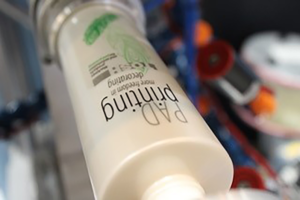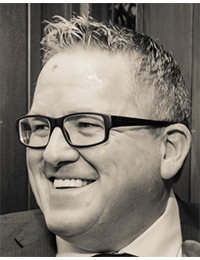by John Kaverman, president, Pad Print Pros
Successfully managing any decorating project requires organizational discipline. When it comes to successful project management, the following are the three key areas on which to focus:
- Create a reasonable timeline.
- Designate a project manager.
- Invest in technology and experience.
 Create a reasonable timeline
Create a reasonable timeline
At the beginning of any project, it is a good idea for organizations to acknowledge that they don’t know what they don’t know. COVID-19 has proven that some things related to the project are outside the manufacturer’s control, as well as the supplier’s. Because decorating falls near the end of the manufacturing process for most products, timelines often have become compressed by the time decorating comes into focus, leaving little room for unforced errors.
How long is long enough? It depends on the complexity of the application. Systems with a low level of complexity (i.e., off-the-shelf with no additional tooling) may ship within two to three weeks. Systems with a medium level of complexity (i.e., multiple accessories for pre- and/or post-treatment, material handling and part-specific tooling) may take 10 to 12 weeks (or more) to prepare for factory acceptance here in the US, especially if the system isn’t in stock and has to be manufactured and shipped to the US supplier from offshore.
Systems with a high level of complexity – such as automation, with part loading, orientation, pretreatment, curing, vision inspection, unloading, etc. – can require several months to design, construct, program and debug before factory acceptance can be scheduled (either in the US or offshore), plus shipping via sea-freight.
Transparency with the chosen equipment supplier (and, where applicable, the end customer) is essential in creating a reasonable timeline and in mitigating negative impacts to the timeline due to unforeseen and/or uncontrollable circumstances.
 Designate a project manager
Designate a project manager
It is imperative that someone within the organization be designated, and, more importantly, enabled, to effectively manage the project. While this person can delegate, they always should be the point of contact with the chosen equipment supplier. The project manager’s primary task is to be the information clearing house for all things relating to preparation of the Request for Quote (RFQ).
Preparing a thorough RFQ requires the collection and concise communication of the following:
- A detailed description of the product: This can best be communicated using physical samples, 3D-printed samples or models, high-resolution digital photos of the product from various angles (with a scale in the frame for reference) and representative examples of artwork.
- Specifics about the material to be decorated: Some materials require pre- and/or post-treatment. If the decorating area is textured, share the texture specification or a physical sample plaque representing the texture. If the decorating area is embossed or debossed, be sure to share that information.
- Decorating requirements: Image dimensions and the number of colors, as well as specifics about the colors (i.e., PMS color designators, master color plaques, etc.).
- Required production rate: How many products need to be decorated per hour/day/year, and how many shifts per day does the facility operate?
- Performance or other specifications that apply to the decoration: For example, chemical/mechanical resistance, adhesion, safety (i.e., medical grade, food grade, etc.).
- Proposed timeline
Proposal review/supplier selection
As the point of contact with potential suppliers, the project manager should be the person responsible for communicating with potential suppliers regarding the following:
- Important limitations. Caveats/noted considerations in supplier proposals aren’t a bad thing, especially when they lead to enlightening discussions.
- Estimated production costs. If a supplier cannot or will not supply a production cost analysis (including labor and materials) utilizing the equipment and rate(s) the supplier is quoting, businesses should proceed with caution.
- Training and technical support. Some decorating solutions don’t come in a box, so training and support are crucial for success. What are those costs?
- Parts and service. Are there recommended spare parts and wear items that should be purchased? What is their availability?

An effective project manager, in the process of communicating with potential suppliers in the performance of requesting and receiving proposals and samples, should have a fairly good idea of which suppliers are more likely to be a good “fit” in partnering with the organization on the project. It is specifically for that reason that the project manager should be a major participant in supplier selection. Further areas the project manager should be involved with include:
Engineering changes
Sometimes products and decorating requirements change. Those changes, and the impact of those changes, should be coordinated by the project manager.
Machine acceptance
Whatever the machine acceptance criteria are, the project manager should be point in coordinating the Factory Acceptance Test (FAT). Depending on the complexity of the project and the acceptance criteria, the FAT may range from not being necessary to requiring a team of personnel to travel to a manufacturer’s overseas facility.
Preparations for installation
Equipment requires floor space, utilities (power, compressed air, gas, etc.) and peripheral equipment (specific tools, work surfaces, fire cabinets, etc.). To avoid lost time and/or potential damage to new equipment (or worse: injury), all of this needs to be coordinated with equipment suppliers, utilities contractors and in-house personnel. Incorrect power, insufficient air pressure and volume, the wrong tools or even insufficient ventilation or other environmental controls can delay projects by weeks after the equipment has arrived.
Shipping and receiving
Coordinating shipping and receiving can be as simple as a few clicks of a mouse, or it may involve the need to specify an air-ride-equipped freight trailer, rent a larger forklift or contract riggers to safely off-load equipment and perform preliminary installation functions, such as placing the equipment on the floor and leveling it.

Final installation and training
The project manager should coordinate things within the organization to ensure the necessary personnel are present (and able to focus) while the equipment supplier’s technician(s) is on-site. In addition, having someone record the training on video for future reference is a good idea.
Documentation
The receipt and distribution of all technical information related to the project (i.e., operator manuals, training videos, electrical schematics, exploded drawings, parts list and material safety data) should be coordinated by the project manager.
 Invest in technology, expertise and personnel
Invest in technology, expertise and personnel
If the organization routinely selects equipment suppliers or purchases equipment and supplies based on price alone, it probably has fallen prey to the “vicious cycle of under-investment.” Instead of wasting money by going that route, focus instead on making better informed decisions by:
Choosing a supplier that specializes in the process
Some decorating equipment suppliers are “a mile wide and an inch deep,” selling equipment for several processes without really specializing in anything. This can be a problem if they are focused more on where their greatest level of investment or profit is instead of focusing on their client.
Choosing a supplier with proven success in similar applications
There exist gaps even between suppliers specializing in a given process with regard to both the level of technology and the level of expertise. For example, the technology and level of supplier expertise required to deliver a solution for a one-color decoration on a $5.00 pair of wholesale promotional sunglasses is not the same technology and level of expertise required to deliver a solution for a seven-color decoration on a pair of sunglasses that retail for $250.00.
Choosing a supplier with development, prototyping and sampling capability
Anyone can sell a pad printer; fewer suppliers can provide proven, turnkey solutions in which decorators can have confidence. Unless the organization has the resources (engineering expertise, capacity and time) to figure it all out itself, it is better off paying its supplier to do it.
Recruitment, training and retention of personnel
Finding, training and retaining skilled operators is the best way to achieve and maintain maximum efficiency and productivity while at the same time mitigating the potential for bad habits to take root.
Look for people with the aptitude to understand the basic theory of operation for the process. Find those who are observant and meticulous when it comes to determining why something didn’t work like it was supposed to work.
Ideally, operators should be able to explain and document things. Invest in professional training by either sending them to the equipment supplier for a few days of initial training or by investing in having the supplier send a technician to the facility.
Once those people have been found and trained, engage them by including them in process reviews and new projects, and pay them accordingly.
Summary
Successful project management has a lot to do with corporate culture. To succeed, someone must be enabled to step up, take ownership of the project and lead. That person needs to be given access to the resources required to ensure that things are done correctly.
Don’t fall prey to the “vicious cycle of under-investment.” Take the time and spend the money to train personnel and retain those employees who clearly demonstrate an aptitude for decorating through their performance.

John Kaverman is president of Pad Print Pros, Inc., an independent consulting firm specializing in pad printing machines, methods and materials. Kaverman, who holds a degree in printing technology, has more than 30 years of industry experience in capacities including production, process and systems engineering, technical sales and service. For more information, visit www.padprintpros.com.


